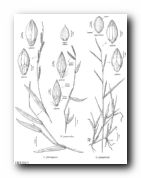
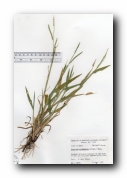
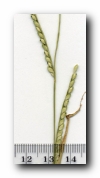
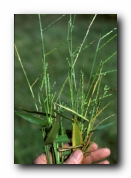
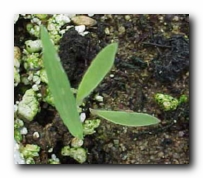
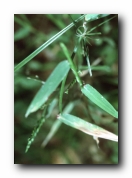
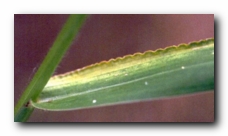
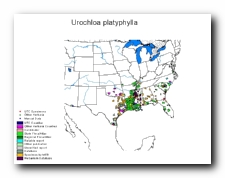
40" Rows: Broadcast:
Loam:
Clay:
Low
High
High
Mature Plant: Leaves are similar to those of seedling, and ligules are absent. Blades are about 4 to 8 in (10 to 20 cm) by 0.2 to 0.8 in (5 to 20 mm), lack hairs, and are smooth to somewhat rough on both surfaces. The midvein is distinct and keeled in the basal portions of the leaf. The collar is whitish, broad, and smooth. Sheaths are open, compressed, and smooth, but sometimes have a tuft of short hair at the base. Culm is stout, tufted arising from a jointed base which trails along the ground.
Special Notes: